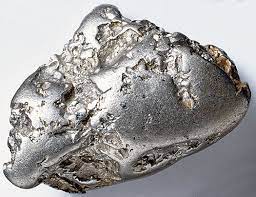Platinum
Platinum is a silvery metallic chemical element, a member of the six transition elements in Group VIII of the periodic table known collectively as the platinum metals (ruthenium, rhodium, palladium, osmium, iridium, and platinum). Platinum has the symbol Pt, its atomic number is 78, and its atomic weight is 195.09.
The electronics industry uses platinum for computer hard disks and thermocouples. Platinum is also used to make optical fibres and LCDs, turbine blades, spark plugs, pacemakers and dental fillings. Platinum compounds are important chemotherapy drugs used to treat cancers. Platinum has no known biological role.

